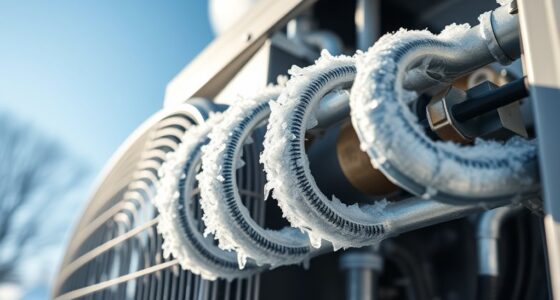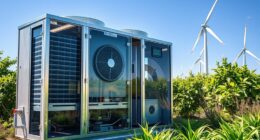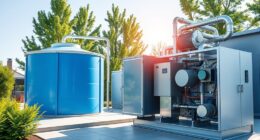Alright folks! Let’s explore the fascinating world of **heat pumps** and discover the basic rules of the **refrigeration cycle**. If you want to understand how these systems work and keep your home comfortable, keep reading to learn more!
You see, a heat pump is like a magician, capable of both heating and cooling your home with a simple flip of a switch. But how does it work? Well, it all comes down to the refrigeration cycle.
In this article, we’ll break down the key components and steps involved, giving you a deeper understanding of this remarkable technology.
So, let’s get started and unravel the mysteries of heat pumps!
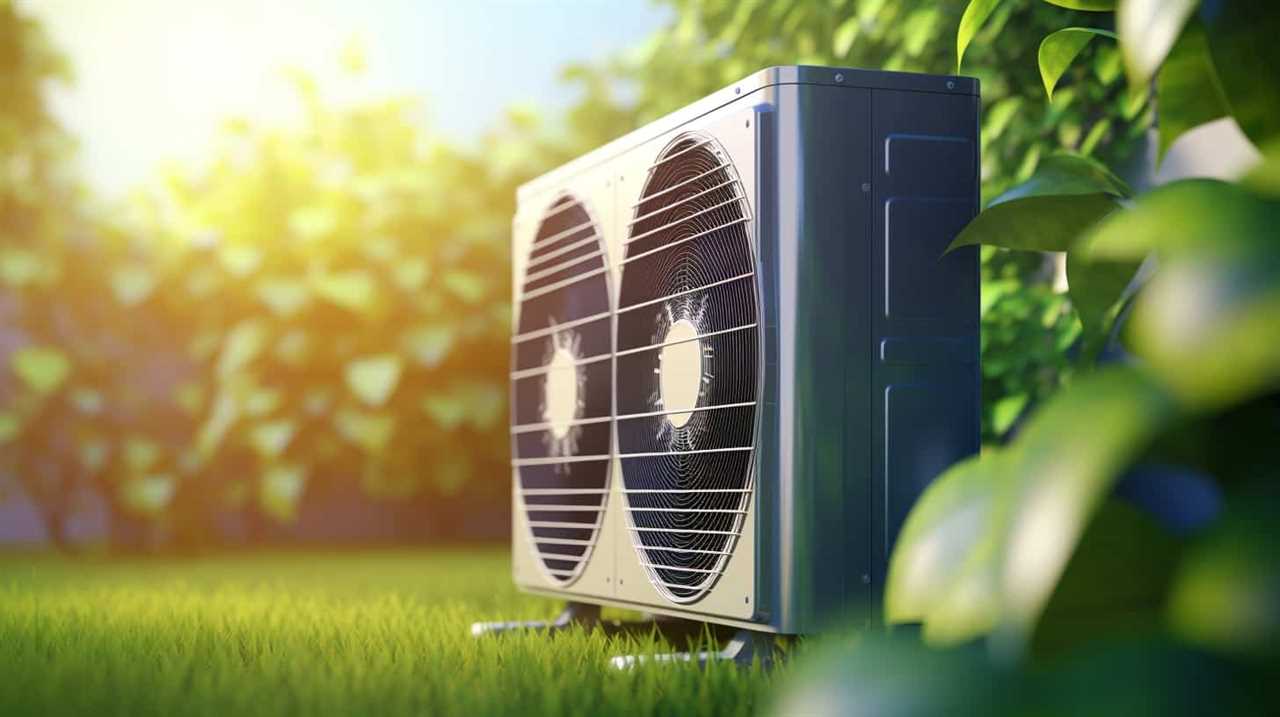
Key Takeaways
- The refrigeration cycle consists of evaporation, compression, and condensation stages.
- The key components in the refrigeration cycle are the compressor, evaporator, condenser, and expansion valve.
- Each component has a specific function in the cycle, such as increasing the pressure and temperature of the refrigerant or absorbing heat.
- Heat pumps can reverse the refrigeration cycle to provide both heating and cooling functions.
Overview of Heat Pumps
We, as experts in the field, will now give you an overview of how heat pumps work.
Heat pump technology is a highly efficient method of heating and cooling that utilizes the principles of thermodynamics. Unlike traditional heating systems that burn fuel to generate heat, heat pumps transfer heat from one location to another using a refrigerant. This allows them to provide both heating and cooling capabilities, making them versatile and cost-effective.
One of the main advantages of heat pumps is their energy efficiency. They can provide up to four times the amount of energy they consume, resulting in significant energy savings for homeowners and businesses. Another advantage is their environmental friendliness, as they produce fewer greenhouse gas emissions compared to combustion-based heating systems.
Understanding the refrigeration cycle is essential to grasp how heat pumps achieve this efficient heat transfer process.

Understanding the Refrigeration Cycle
To understand how heat pumps work, it’s important to grasp the concept of the refrigeration cycle. The refrigeration cycle is a series of processes that enable the transfer of heat from one place to another.
Here are three key principles of the refrigeration cycle:
-
Evaporation: In this stage, the refrigerant absorbs heat from the surroundings and changes from a liquid to a gas.
-
Compression: The compressor increases the pressure and temperature of the refrigerant gas, making it ready for the next stage.
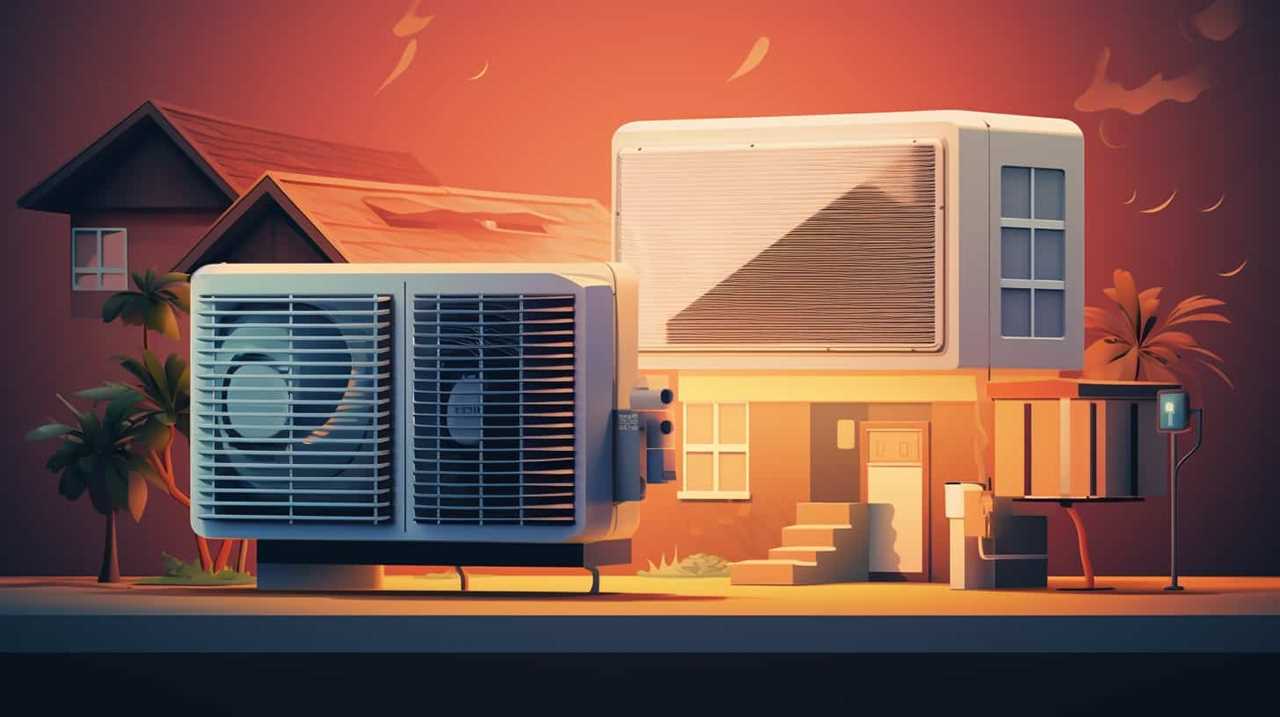
-
Condensation: In this step, the refrigerant releases heat to the surroundings, causing it to change back into a liquid form.
These principles are based on the heat transfer mechanisms of evaporation and condensation. Understanding how these processes work is crucial in comprehending the overall functioning of a heat pump.
With this understanding, we can now delve into the key components in the refrigeration cycle.
Key Components in the Refrigeration Cycle
Now let’s discuss the key components in the refrigeration cycle of heat pumps.

These components are essential for the cycle to function properly. Each component serves a specific function in the cycle, ensuring efficient heat transfer and optimal performance.
Understanding the role of each component is crucial in comprehending the overall operation of the refrigeration cycle in heat pumps.
Essential Refrigeration Cycle Components
One of the most important components in the refrigeration cycle is the compressor. It plays a crucial role in the refrigeration cycle by increasing the pressure and temperature of the refrigerant, allowing it to release heat to the surroundings.
The compressor is just one of the many essential components that work together to achieve the desired refrigeration cycle function. Other key components include:

-
Evaporator: This component absorbs heat from the surroundings, causing the refrigerant to evaporate and turn into a low-pressure gas.
-
Condenser: The condenser receives the high-pressure, high-temperature refrigerant from the compressor and releases heat to the surroundings, causing the refrigerant to condense into a liquid state again.
-
Expansion valve: This valve reduces the pressure and temperature of the refrigerant, allowing it to enter the evaporator and start the cycle again.
These components work harmoniously to ensure efficient and effective heat transfer in the refrigeration cycle, providing cooling and comfort to the users.

Function of Each Component
All of the key components in the refrigeration cycle play a vital role in the efficient operation of heat pumps. These components include the compressor, condenser, expansion valve, and evaporator. Each component has a specific function that contributes to the overall functioning of the heat pump.
The compressor is responsible for compressing the refrigerant, which increases its pressure and temperature. This high-pressure, high-temperature refrigerant then flows to the condenser, where it releases heat to the surroundings and condenses into a liquid state.
The expansion valve regulates the flow of the refrigerant into the evaporator. As the refrigerant enters the evaporator, it undergoes a phase change from liquid to vapor, absorbing heat from the surrounding air or water. This cooled vapor is then returned to the compressor to restart the cycle.
Understanding the component functions and refrigerant properties is crucial for maintaining the efficiency and performance of heat pumps.

Now, let’s move on to the next section, where we’ll discuss evaporation: the first step in the cycle.
Evaporation: The First Step in the Cycle
Our first step in the refrigeration cycle is the evaporation of the refrigerant. During this evaporation process, the refrigerant absorbs heat from its surroundings, resulting in a cooling effect. This heat transfer occurs as the refrigerant changes from a liquid state to a gas state.
To better understand the importance of evaporation in the refrigeration cycle, consider the following:
- Evaporation allows the refrigerant to absorb heat from the surrounding environment, cooling the area.
- The evaporation process occurs in the evaporator coil, where the refrigerant takes in heat and transforms into a gas.
- As the refrigerant evaporates, it changes from a low-pressure liquid to a low-pressure gas, ready for the next step in the cycle.
Now that we’ve discussed the evaporation process, let’s move on to the next step in the refrigeration cycle: compression, which boosts the heat absorbed during evaporation.
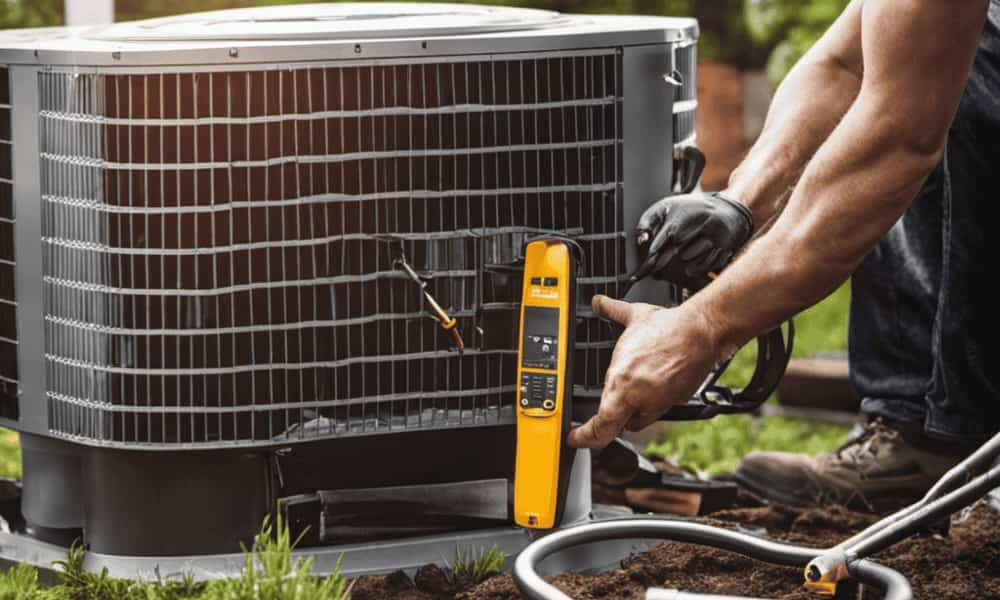
Compression: Boosting the Heat
Now let’s move on to the next step in the refrigeration cycle: compression.
In this stage, we’ll explore the relationship between temperature and pressure, as well as the energy efficiency considerations involved.
Understanding how compression works is crucial as it’s the key to boosting the heat in a heat pump.
Temperature and Pressure Relationship
First, we increase the pressure of the refrigerant to boost the heat in the system. This temperature and pressure relationship is a fundamental concept in the refrigeration cycle of heat pumps. As the pressure of the refrigerant increases, its temperature also rises. This occurs due to the thermodynamic properties of the refrigerant, specifically its specific heat capacity and enthalpy.

By increasing the pressure, we’re essentially compressing the refrigerant, which causes its molecules to move closer together and collide more frequently. These collisions generate heat, thereby increasing the temperature of the refrigerant.
This increase in temperature allows the refrigerant to absorb heat from its surroundings more effectively, facilitating the heat transfer process. Ultimately, this temperature and pressure relationship plays a crucial role in the overall efficiency and performance of heat pump systems, allowing us to provide efficient heating and cooling solutions to serve others.
Energy Efficiency Considerations
To ensure optimal energy efficiency, we must consider how compression plays a role in boosting the heat in heat pump systems. Energy saving techniques for heat pumps rely heavily on the compression process. The compression of the refrigerant gas increases its temperature and pressure, allowing it to absorb heat from the surrounding environment. This heat is then transferred to the indoor space or water being heated.
However, factors affecting the energy efficiency of heat pumps must be taken into account. These include the type and quality of insulation, the size and layout of the space being heated, and the operating conditions of the heat pump. By considering these factors and implementing energy saving techniques, such as proper insulation and regular maintenance, the energy efficiency of heat pumps can be maximized. This is crucial in ensuring lower energy consumption and reduced operating costs.
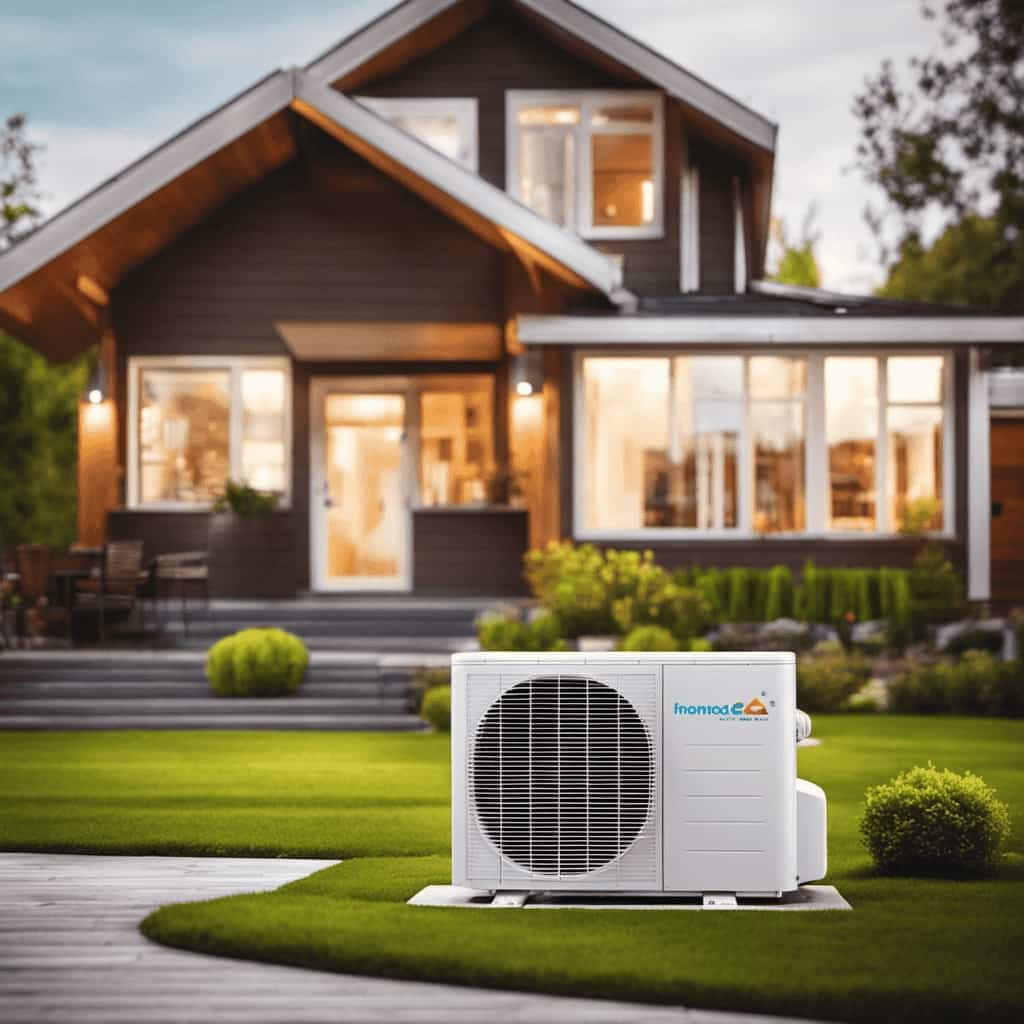
Transitioning into the subsequent section, these energy efficiency considerations are essential for understanding the next step in the refrigeration cycle: condensation and the release of heat.
Condensation: Releasing the Heat
As we move through the refrigeration cycle in a heat pump, condensation becomes a crucial step for releasing the heat. During condensation, the high-pressure refrigerant gas loses its heat and transforms into a high-pressure liquid. This transformation occurs as the refrigerant comes into contact with the cooler surface of the condenser coils.
Here are three important aspects of condensation in heat pumps:
-
Heat Transfer: Condensation is a process of heat transfer where the latent heat of the refrigerant is released to the surroundings.

-
High-Pressure Liquid: The refrigerant, in its high-pressure liquid state, still contains a significant amount of heat energy that can be utilized for heating purposes.
-
Cooling Medium: The condenser coils provide a cooling medium for the refrigerant, allowing it to release heat and lower its temperature.
Expansion: Lowering the Temperature
Now let’s move on to the second step in the refrigeration cycle: expansion, where we lower the temperature. During the expansion process, the high-pressure refrigerant from the condenser is allowed to expand rapidly, which causes a decrease in its temperature. This temperature drop is essential for the cooling effect in heat pumps.
The expansion process takes place in the evaporator coil, which is designed to maximize heat transfer between the refrigerant and the surrounding air or water. As the refrigerant expands, it absorbs heat from the surrounding environment, causing the air or water to cool down. This cooled air or water is then used to provide cooling or heating in the desired space.

The evaporator coil is a critical component in the refrigeration cycle, as it facilitates the transfer of heat and enables the efficient operation of the heat pump. By effectively lowering the temperature through expansion, the refrigerant is prepared for the next step in the cycle: absorption of heat in the evaporator.
Reversing the Cycle: Heating Vs. Cooling Mode
When heating, the refrigeration cycle in heat pumps operates by reversing the direction of the refrigerant flow. This allows the heat pump to extract heat from the outside air or ground and transfer it indoors.
Here are three key points to understand about reversing the cycle in heating mode:
-
Heating Efficiency: Heat pumps are known for their high energy efficiency. By reversing the cycle, heat pumps can achieve a heating efficiency of over 100%, meaning they can produce more heat energy than the electrical energy they consume.
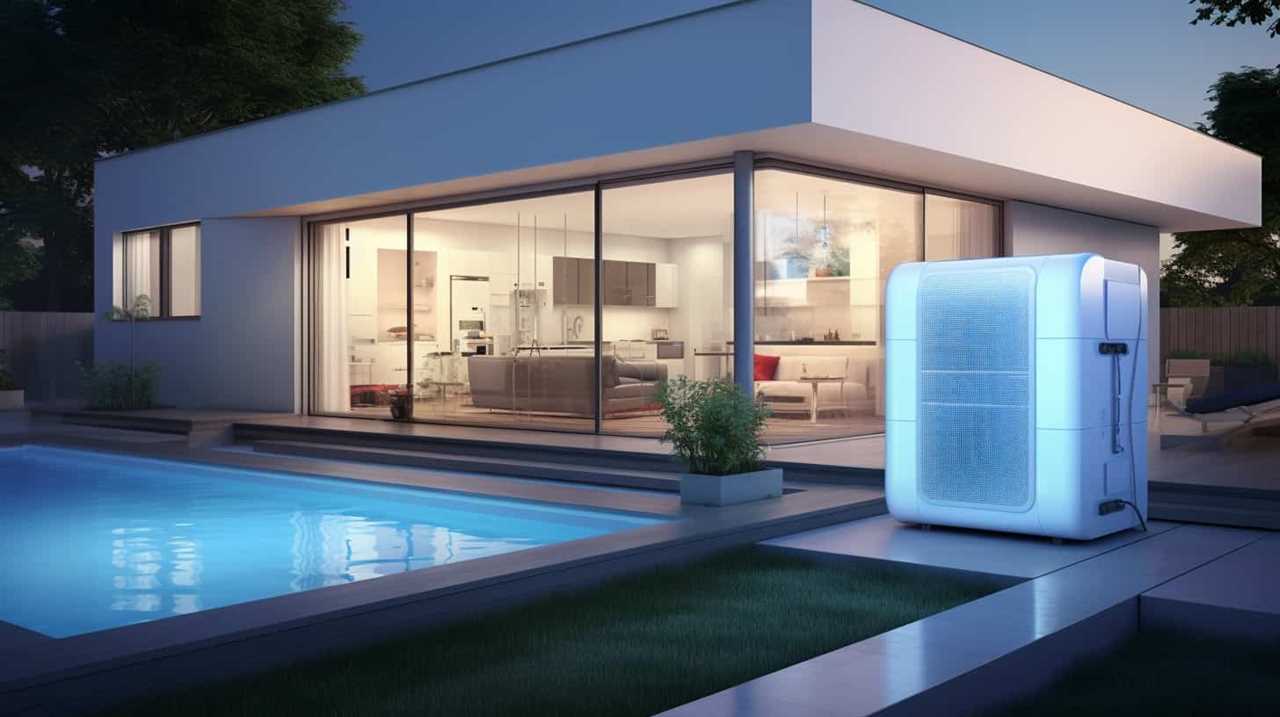
-
Cooling Capacity: While heat pumps excel at heating, they can also provide cooling in the summer months. By reversing the refrigeration cycle again, heat pumps can remove heat from indoors and transfer it outside, effectively cooling the space.
-
Dual Functionality: Heat pumps offer a dual functionality, serving as both heating and cooling systems. This versatility makes them a cost-effective and space-saving option for homes and buildings.
With their ability to efficiently heat and cool, heat pumps are a reliable and sustainable choice for maintaining comfortable indoor temperatures throughout the year.
Efficiency and Performance of Heat Pump Systems
To understand the efficiency and performance of heat pump systems, it’s important to consider the coefficient of performance (COP) and the seasonal energy efficiency ratio (SEER).
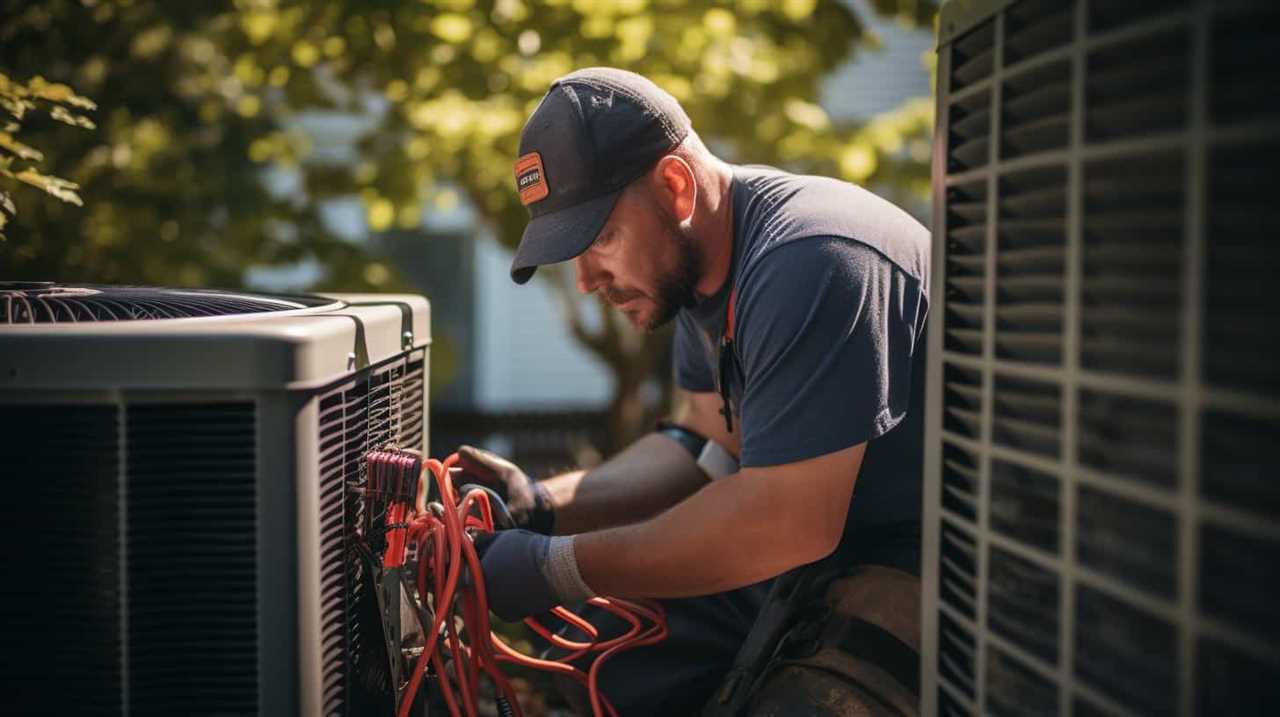
These two metrics are used for heat pump efficiency and performance evaluation. The COP represents the ratio of heat output to the amount of electricity consumed by the heat pump. A higher COP indicates higher efficiency and better performance.
The SEER, on the other hand, measures the cooling output of the heat pump over a typical cooling season divided by the total electrical energy consumed during the same period. It provides an overall measure of the heat pump’s energy efficiency throughout the cooling season.
Frequently Asked Questions
How Much Energy Does a Heat Pump Use Compared to Other Heating and Cooling Systems?
Compared to other heating and cooling systems, heat pumps use less energy, resulting in higher energy efficiency. This not only reduces utility bills but also has a positive environmental impact by reducing greenhouse gas emissions.
Can a Heat Pump Be Used in Extremely Cold Climates?
Yes, a heat pump can be used in extremely cold climates. Despite lower energy efficiency compared to other systems, heat pumps can still provide heating in these conditions by extracting heat from outdoor air or ground.
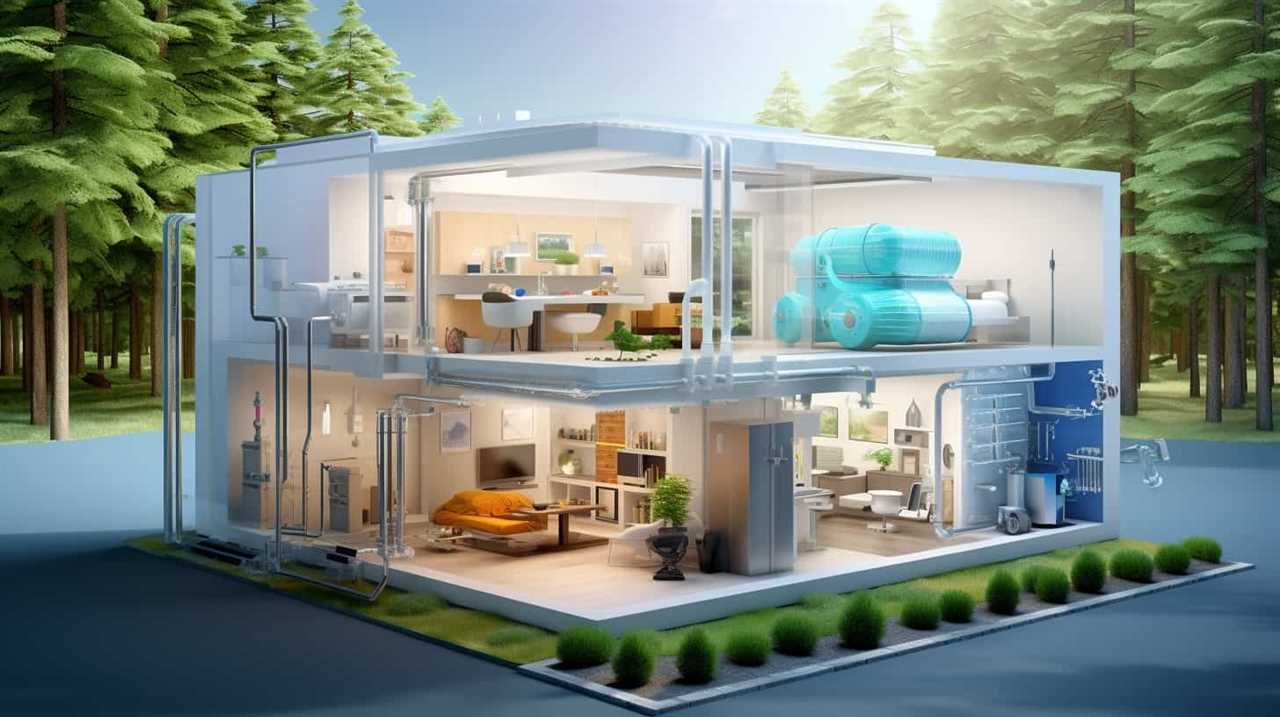
Are Heat Pumps Noisy?
Yes, heat pumps can be noisy. However, with regular maintenance and proper care, noise levels can be minimized. It’s important to consider the specific model and its noise ratings before installation.
How Long Does a Heat Pump Typically Last?
Heat pumps typically last 15-20 years with proper heat pump maintenance. Signs of heat pump failure include reduced heating/cooling capacity, strange noises, and frequent breakdowns. Regular maintenance can extend the lifespan.
Can a Heat Pump Be Used to Heat Water for Domestic Use?
Yes, a heat pump can be used to heat water for domestic use. One advantage is its high efficiency, which can result in significant energy savings. For example, a heat pump water heater uses up to 60% less energy than traditional electric water heaters.
Conclusion
In conclusion, the refrigeration cycle in heat pumps is a complex process that efficiently transfers heat from one location to another. Understanding the key components, such as evaporation, compression, condensation, and expansion, is crucial for comprehending how heat pumps work.
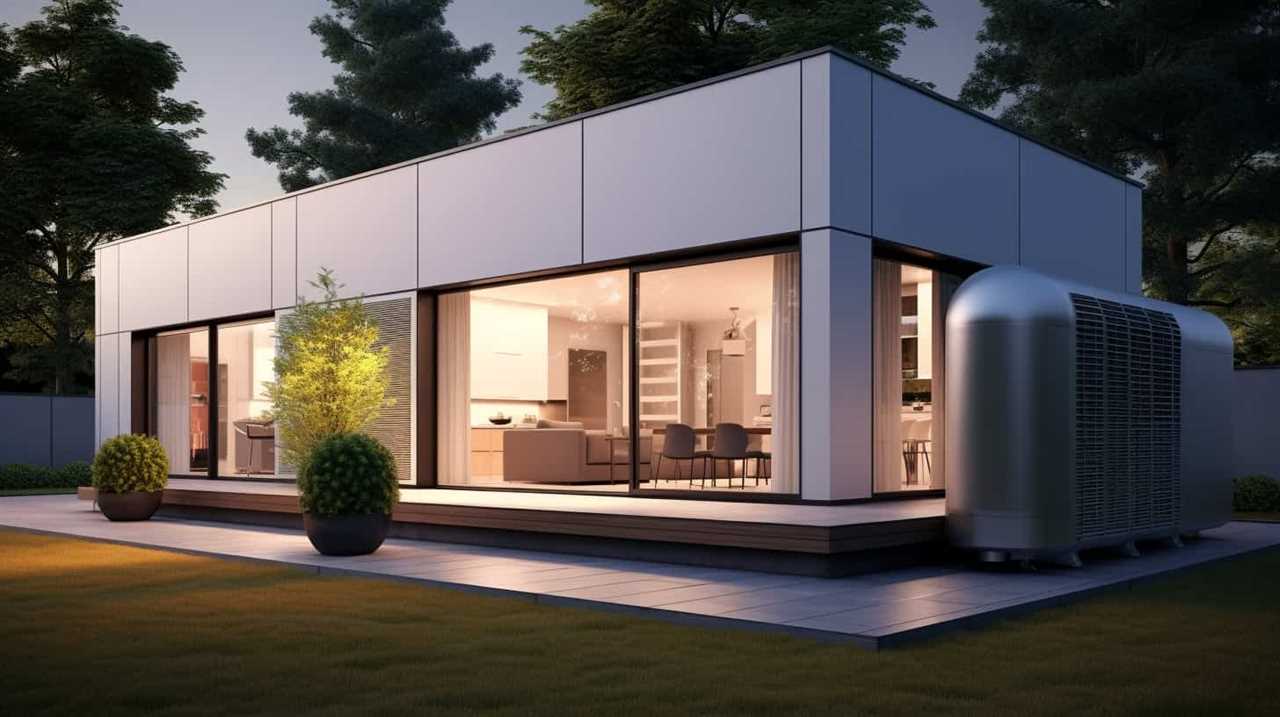
By reversing the cycle, heat pumps can alternate between heating and cooling modes. The efficiency and performance of heat pump systems make them an excellent choice for maintaining comfortable indoor temperatures.
It’s truly a marvel of engineering and a game-changer in the world of HVAC technology.





